Published on February 13th, 2020
If you are looking to adopt a pug, the thing to know first is that their whole purpose in life is to be your companion. They like to be on your lap when you relax, in bed when you sleep and when you are out and about, they enjoy being in the car with you. They epitomize the saying dog is man's best friend.
But you may also be asking the question do pugs shed?
Breeds that shed heavily require a lot more grooming, and they make it challenging for you to keep your home free of pet hair. This single characteristic may weigh heavily when deciding on the perfect breed for you and your family.
So let's find out whether pugs shed heaps or not.
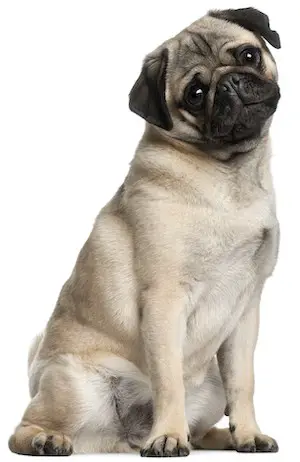
Seasons
Pugs are known to shed all year round, but you can expect that the season will play a part in how much your pug sheds. Spring is a heavy shedding time because they are shedding two coats from the winter.
Fall is also going to be an excessive shedding period due to losing the summer coat and thickening up for the cold. Just remember, two coats are a lot of hair to shed.
Type of Coat
Depending on whether or not your pug has a single or double coat will be a factor on how much your pug sheds. The reason the black pug sheds less is that they are usually single coated, which will decrease the shedding some, but not much.
If you have a light-colored pug, they are often double-coated, and the shedding will be considered more than what one would be used to when it comes to a small dog.
Age
Believe it or not, as your pug gets old, their shedding gets worse.
Until they are about a year old, they lose an average amount of hair. Once they reach a year old, they mature, and their double coats are in, and the shedding will get much worse.
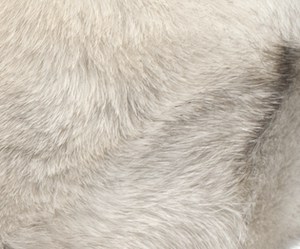
Baths
Bathing your dog will trigger them to shed more because massaging the coat will loosen up all the fur that is starting to fall out.
However, bathing can also be a good way of controlling shedding if you combine grooming with bathing sessions.
Allergies
Allergies are a common cause of excessive shedding in all dogs. Pugs are very prone to allergies, and their first line of defense is to shed.
Environmental allergens, such as fleas, ticks, and other parasites, can cause your pug to shed more than usual. Fleas are especially troublesome for pugs due to there being so much hair.
Having so much hair is also a problem with specific allergies, as well. Since there is so much hair packed on their small bodies, when they have a reaction to anything, be it environmental or internal, they will start dropping hair and probably scratching the area that is affected. They may even get a bald patch where they are experiencing their reaction.
Stress
As with any dog breed, even humans, for that matter, stress can cause hair loss. With a pug being a dog breed that is there to be your companion and with you all the time, your pug can get stressed quicker than other dog breeds when left alone.
If you start a job and end up leaving them for hours a day when they are not used to that, their shedding can get bad, and patches of hair can fall out. Even something as simple as changing where they sleep or introducing a new animal can cause a lot of stress for your pug.
Mange
Pugs are one of the breeds that are more susceptible to demodectic mange, also known as "demodex." This skin disease is caused by parasitic mites called demodectic mites. These mites live at the base of the hair follicles and are normally present without causing symptoms. However, especially your pugs may suffer from a weakened immune system causing them symptoms like bald patches or loss of appetite.
Hormonal cycles
Another cause of excessive shedding is hormonal. Non-spayed female pugs will have an influx of hormones that can cause hair loss and excessive shedding at certain points during the hormonal cycle.
Tips to Get Your Pug's Shedding Under Control
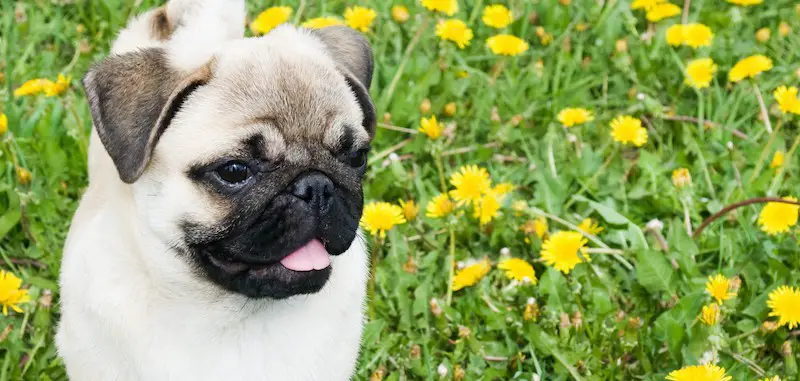
Brushing
Routinely brushing your pug will help get the dead hair loose and removed, and help with the everyday shedding issues. We recommend quickly brushing through your pug's coat every day to remove loose hair and minimize shedding.
A bristle brush or deshedding glove is great for pugs with a single coat. The bristles won't have to reach deep into the coat, and they can help spread natural oils and control dander.
However, if you have a pug with a double coat, you may need more powerful tools for grooming. For a brush, we recommend a slicker brush with short and flexible wire bristles. This type of brush is gentle enough for the short fur of your pug, while still removing loose hair from the undercoat.
Deshedding tool
In addition to daily upkeep brushing, you should use a deshedding tool once a week to remove loose hair from the undercoat as well. This type of grooming tool is designed to penetrate the top coat to deshed the undercoat. It will make sure you get rid of all the dead hair that is there waiting to fall out.
Doing this regularly once a week along with daily brushing, will help you keep the shedding at bay and your home cleaner.
Bathing
Bathing your pug on a regular basis will help keep shedding under control as well. It is because when you bathe them regularly, you are massaging the skin as well, which will loosen up the dead hair.
While bathing will trigger shedding, keeping a regular bathing schedule with a mild shampoo will help with controlling it.
Bathing your pug once a month should be enough.
However, be mindful that during and after bathing, the pug is going to be shedding like crazy, so be prepared for a good cleaning session afterward.
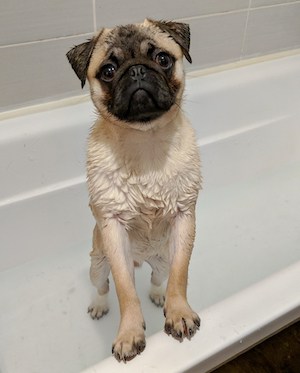
Always wait until the fur is completely dry, but after a bath is an ideal time to get out the deshedding tool. After bathing, there will be heaps of loose fur, which is better collected than shed around your home.
Dietary Supplements
Omega fatty acid supplements for your pug will actually help with the shedding. The key to keeping a coat in good shape is keeping the skin in good shape as well.
Using fish oil is the best for your pugs. Wild fish as well, not farmed fish. These supplements will keep your pug's coat in good shape and help keep it shining. And when the coat is healthy, you won't see any excess shedding.
Hydration
Hydrate, Hydrate, Hydrate. Pugs not only need clean water to help with shedding, but they need it because they can actually die in the heat.
Water is essential for humans when it comes to healthy skin, so it is not a far-fetched idea that your pug will benefit from being hydrated and having clean water to drink. Dehydration may cause excess shedding, so keeping your pug hydrated is again a good way to make sure the shedding is kept down to the minimum.
Skin Disease Prevention
They say that an ounce of prevention is worth a pound of cure. When it comes to a pug shedding, preventing skin issues before they start is half the battle when it comes to helping a pug reduce their shedding.
It is really simple; just regular vet visits and keeping a regular schedule with bathing and grooming will help keep you informed when it comes to their skin conditions.
Shedding Causes and What to Do
Parasites, Fleas, Mites
As with any dog, these little pests can cause your pug's world to turn upside down. You will more than likely notice before it gets too bad because your pug will be digging and having some hair loss that will be excessive even for your pug.
The best way to prevent these issues is to inspect your dog regularly when you groom and bathe them. If you see anything out of the ordinary, take your pug to the vet.
The vet will do an exam and then prescribe the correct medicine according to their weight. Just a word of caution, do not try to treat them yourself because it is weight-based and some over the counter treatments can cause more harm than good.
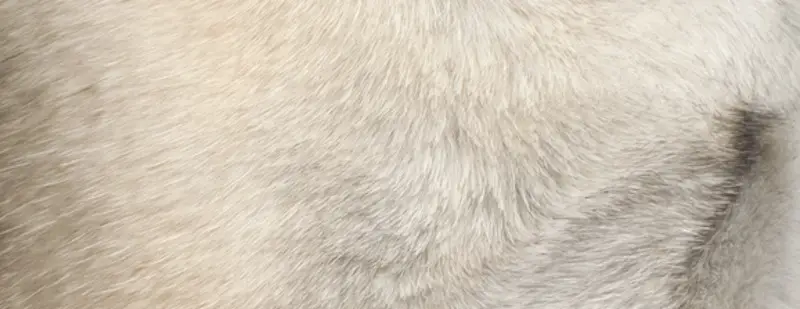
Fungal or Bacterial Infections
As with any kind of infection in your dog, you will notice some symptoms. If they have a fungus, you will notice that it spreads, and depending on what it is, it can spread quickly. Most fungal infections will have a scaly appearance.
It will cause shedding if not patches of hair loss, and you will be able to pick up on that quickly. If it is a bacterial infection, there will probably be other symptoms that you will pick up on as well. The best way to deal with these infections is to take your pug to the vet.
Most of the time, it is an exam and possibly some blood work or stool tests. They will give you either oral or topical meds or shampoo to help it heal.
Thyroid Issues
If your pug has thyroid problems, this can cause excessive hair loss as well. There will be more shedding because hair growth is directly related to hormone function. That is why females who are in heat can have hair loss. With the thyroid, this will be a lifelong issue you will have.
There will be blood work, and then you will have to give them meds to regulate their hormones. You will also notice a lack of appetite and energy with this as well. Usually, though, excessive shedding will be a sign of thyroid for your pug.
Kidney and Liver Disease
If your pug has a kidney or liver problem, you can usually tell by their appetite, bathroom habits, and their hair loss as well. Any time your pug has organ issues that deal with absorption issues in the GI tract, hair loss will be a definite sign because a healthy diet is needed for a healthy coat.
When your dog cannot absorb the required nutrients, their hair can start falling out in clumps. The vet will do bloodwork and let you know what the diagnosis is, and sometimes just a round of meds can improve the situation.
Pregnancy or Lactation
If you have a female pug that is either pregnant or feeding a litter, she is going to be depleted of her nutrients, along with the influx of hormones that she is having.
It is going to affect her shedding directly. She may lose her hair in patches, but once she is done lactating or has her litter, the problem should resolve itself.


